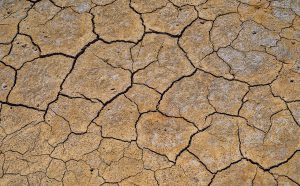Integrating Renewable Energy for Desalination Plant Operations under Generation and Membrane Life Uncertainty
California is running out of water. Recent reports from the Spring of 2020 indicate that groundwater depletion and poor water management, compounded by droughts and high-usage agricultural plots, are running the once-prolific state into a critical scarcity zone that they may not recover from (Sciencemag.org, 2020). The water crisis in California is just one example, but unfortunately, it reoccurs in many other states. Worldwide, the WHO projects that over two billion people live without access to clean, treated water. It is hard to believe that in the age of smart technologies, neural mapping, and multi-trillion dollar companies, there are still three out of every ten people on the planet who do not have clean water. What's worse, almost 850 million people lack access to an essential water source, not to mention a clean one (WHO, 2020). With the estimated growth in the global population over the next thirty years, the INWEH expects that about 40% of the world will be living in water-scarce conditions by 2050. That will be almost four billion people (INWEH).

In conjunction with climate change and human expansion, water scarcity has never been a more urgent concern for our species. Even today, we lose roughly 1.6 million human lives per year to waterborne diseases (INWEH), so the problem is not simply one of availability or conservation – it is also one of treatment. I live the life of a scientific researcher and engineer, and I seek to dedicate my life to the issue of water scarcity and water treatment. My pursuit has been one of discovery, sacrifice, and endurance. The gravity I feel towards the crisis of global water demand has been informed by the academic, professional, and international journeys through which I find myself today addressing a future of study in water treatment solutions. California was a place I once called home. My performance in science and engineering and my sturdy track record with employment landed me a letter of acceptance to California State University, Fresno, where I took on my Master of Science in Mechanical Engineering. Within my first few semesters of the graduate program, I gravitated towards projects that make a difference in human lives. As I continued through my coursework, an undeniable sense of passion enveloped me while working in higher-order science and engineering concepts tailored to solve real-world problems. For example, it was in a Hydrology course where I first encountered water treatment solutions. As a result, I began exploring chemical desalination methods and taking a critical look at the question of water shortage worldwide and the approaches by which we might address it. My graduating GPA was stellar, and by that time, I had established a deep record of steady employment and practice as an educator and leader. While my toolbox is rather extensive, my real passion lies in collaborating with others on challenging research areas and exploring new pathways toward success in converting and/or renewing natural resources. My ascent to a doctoral program at Texas State University, and the studies I encountered therein, drove this passion home in unforeseen ways. My work on desalination in Texas State University's Department of Materials Science, Engineering, and Commercialization led to my proudest research accomplishment: a mass and energy balance project for Effluent Free Desalination of seawater. The process of removing the salt from seawater is called desalination, and it may be the best long-term solution for the supplies of potable water. Today, many regions worldwide are coming under the threat of water scarcity, with some areas are unable to provide enough clean and drinkable water to the local community. Since reverse osmosis (RO) desalination is an energy-intensive process, renewable power has become a promising source of an investigation by many researchers and engineers worldwide. The primary motivation of the dissertation study is to design a cost-effective renewables-based RO desalination system and determine how to optimize the membrane to prolong the working life. Many water-scarce areas that are the most threatened are the ones that lack access to electrical grids. Since electricity and heat are the most common energy sources for desalination, alternative means must be considered and implemented. Fossil fuel-based generators pose grand challenges in terms of carbon emissions and high operational costs due to maintenance. Therefore, wind turbines and solar generation through photovoltaics have become more attractive approaches. Thankfully, photovoltaic collectors also result in lower maintenance costs. Furthermore, wind turbines can be installed in remote areas where water scarcity is often highest.

In addition to energy, there is also the critical question of membrane durability with RO desalination systems. Since membranes have yet to be fully optimized within renewable energy-powered RO desalination systems, analyses on membranes' lifetime, reliability, and energy usage are necessary. Membranes often become less efficient in their filtration capacities over time. A comprehensive optimization analysis such as this one can shed needed light on producing the best membrane under the most efficient parameters for use. The present research endeavors to optimize membrane design parameters to ensure the highest quality permeates and maximum flux for renewables-based RO desalination. The solution diffusion model and phenomenological equation of the thermodynamic of irreversible processes are approaches that have described the transport in RO membrane. This dissertation works to solve the phenomenological equation and solution diffusion model in optimizing membrane flux for different types of feed water using a numerical method solved by Matlab. Secondarily, the results from both models are compared to optimize the membrane design parameters and ensure the high quality of permeate water. Most researchers have investigated the transport in RO membranes using the solution diffusion model, which neglects kinetic coupling between different fluxes. The solution diffusion model is used to calculate and optimize the flux, membrane resistance, and membrane thickness for brackish water and seawater applications. Where it was found that lower thickness leads to higher flux, this dissertation will apply two different mathematical models to study the mass transports in different RO applications that are integrated with renewable energy. The goal is to calculate the flux and other design parameters for the membrane to prove the other research results. However, previous researchers have studied mass transport through RO membranes in systems that were not integrated into sources of renewable energy. This research is expected to show that the highest flux quality permeates, and maximum flux is obtained by the solution diffusion model for solar-photovoltaic RO desalination processes. My future work will be dedicated to global water desalination solutions that are cost-effective, renewably powered, and geared towards clean water access for underserved, threatened, or developing regions worldwide. Membrane optimization is a central tenet of success with integrated RO desalination systems, hence continued work on membrane research should be fruitful and pragmatic. Other research areas in which I have applied my diligence and passion over the years include a presentation at the WISE Conference on systematic approaches to algae removal for hydroponic systems, exploring efficiency models of desiccant cooling systems as a means of energy conservation, Thermo-Stone block insulation for residential buildings in my home country of Jordan, and active solar water heating systems. As is hopefully clear through my research pursuits, my relationship with science and engineering is one of innovation, altruism, and hope for the future. Now, with my recent admission to the U.S. Army, I hope to join forces with their global water treatment research teams to take my desire to help to a larger stage.















